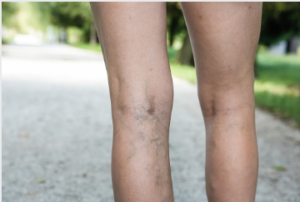Varicose veins are knotty, enlarged and discoloured veins. They form when the valves inside a vein fail to work properly.
Varicose vein treatment medical procedure Adelaide involves changing lifestyle habits or having a medical procedure to remove or close the affected veins. The procedures are usually done under local anesthesia or with a healthcare provider’s help.
varicose vein treatment medical procedure Adelaide Endovenous Laser Ablation (EVLA)
Endovenous Laser Ablation (EVLA)
Before the procedure begins, your doctor applies a topical numbing ointment to the area around the affected vein. Then, they make a small cut or incision in the skin and insert a tube called a catheter into the affected vein. A device at the end of the catheter heats up and closes the varicose vein.
The procedure is usually performed on an outpatient basis under local anesthesia. A map of your varicose veins is first made using Duplex ultrasound. Then a needle is put into the affected vein and then a wire is passed over it. The sheath is then put over the wire, and the catheter is positioned in the sheath and moved into position under ultrasound control. The doctor then runs a laser fibre through the catheter and heats the inside of the vein. It causes the vein to close and the bulgy varicose vein to fade away.
Endovenous Radiofrequency Ablation (EVRF)
It is a minimally invasive Varicose vein treatment medical procedure Adelaide that uses radiofrequency energy to close the varicose vein. Our specialist will use the VNUS ClosureFast catheter (by Covidien), which delivers constant heat to the walls of the vein, causing it to collapse and seal. The blood flow is then automatically rerouted through healthier nearby veins, relieving swelling and other symptoms. Over time, the ablated vein becomes fibrous tissue and is reabsorbed into the body. This technique has a higher success rate and is less invasive than laser ablation, with a lower risk of skin damage. However, it may still cause a small amount of bruising and tenderness in the treated area, which can usually be relieved with ice packs and non-steroidal anti-inflammatory drugs.
During this treatment, your specialist will numb the area around the affected vein with local anaesthesia. Then, they will make a small incision, usually below the knee or ankle. They will then insert a thin tube into the incision and guide it down to the abnormal vein. They will then apply radiofrequency or laser energy to the lining of the vein, which causes it to seal off.
This procedure eliminates the varicose vein and relieves pain, swelling and itchiness. It can also improve the appearance of your legs. It is usually performed by an interventional radiologist, phlebologist or vascular surgeon, with the help of duplex ultrasound (using images or pictures on a screen to visualise your veins). Unlike surgery, this procedure does not require you to stay in the hospital overnight.
Sclerotherapy
Most people can return to their normal activities right away. Your doctor may recommend that you wear compression stockings or bandages for a few weeks to aid or prevent blood clots. You should also take several short breaks each day to raise your legs above the level of your heart — this will improve blood flow and encourage a faster recovery.
It’s important to tell your healthcare provider about any problems that occur after your sclerotherapy treatment. These include a change in the colour of your leg, brownish splotches around an injection site that fade within a few months or years, and allergic reactions to the chemical solution that’s injected into the vein. You also may not be a good candidate for sclerotherapy if you’re pregnant or breastfeeding, have a bleeding disorder, or have had a blood clot in the leg (deep vein thrombosis). Some large varicose veins don’t respond to sclerotherapy and might need to be treated with another method.
